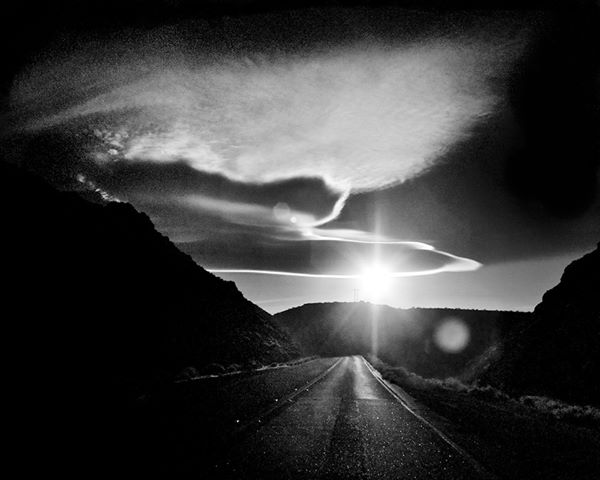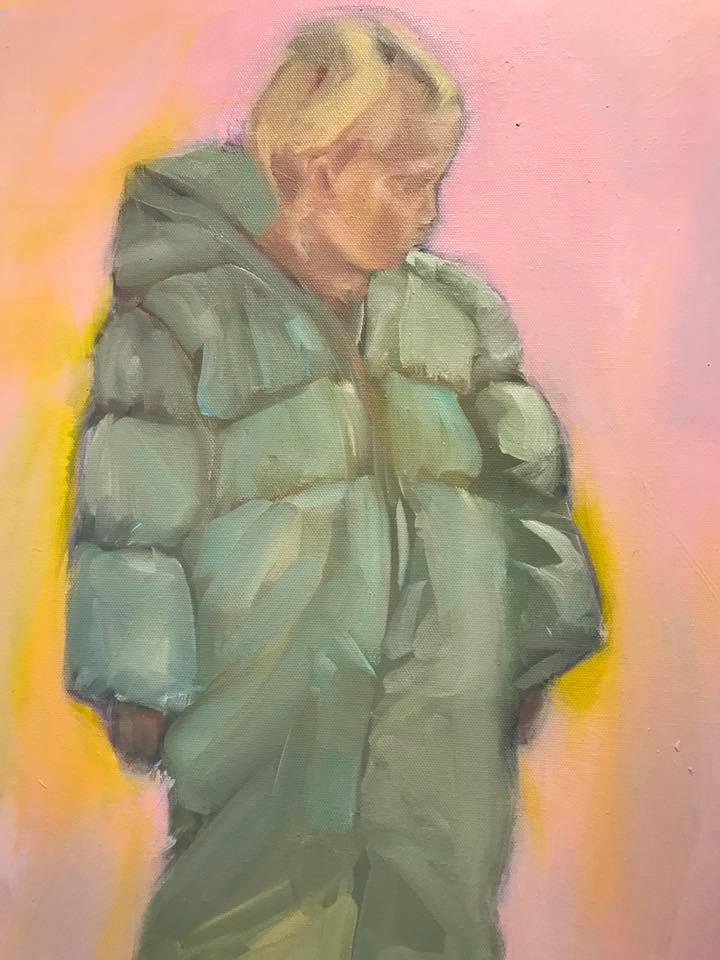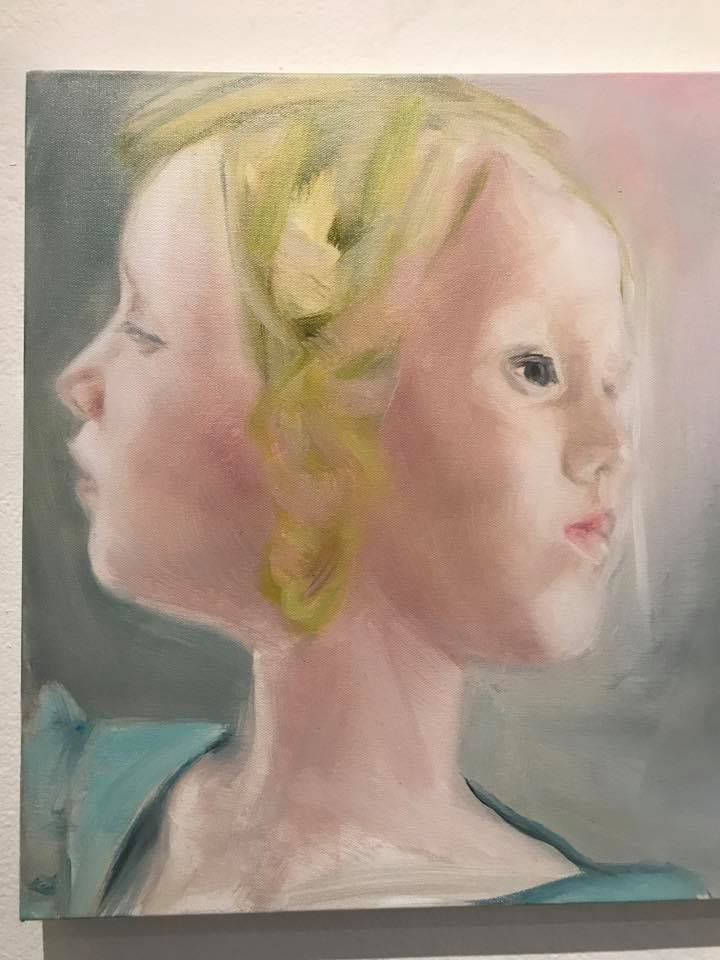
Beautiful and evocative, Susan Ossman’s exhibition In the Wash is as vibrant as it is graceful.
Made up of three large-scale works, each of which is comprised of four to six canvasses, the works depict laundry drying in the open air, stretched across multiple canvases like sheets strung on a clothesline.
Each piece follows a progressive color palette, as alive with the changing seasons as the sheets are with movement of the breeze, and the generations-long ritual of pinning freshly washed objects to clotheslines. The works are also a reflection on waiting, according to the artist.
Like all Ossman’s art, these pieces suggest movement and light, emerging from her use of lines. Clotheslines, and the action of hanging laundry are intrinsic in the gestures of the paintings, but the lines also seem to represent a kind of kinetic energy running through the works. The undulating sense of motion is hypnotic in these pieces, as is the artist’s use of rich color and soft texture.



The first painting in the exhibition, “Christo’s Laundry,” above, uses a classical style of oil painting that recreates the soft, gentle movement of the fabric on a spring day. There’s a sense of calm in the subtle movement she depicts. The colors are those of spring flowers, lavender, pale blue, deep purple. The yellow of the sheets is soft and pale, like the spring sun.


Ossman’s style veers more toward the modernist in the expressionistic “Winter Wash,” which evokes a sense of haste in the more rapid wintery movement of the wind, and her depiction of the environment in which the laundry lines are strung. It is a tangle of swirling lines and the curls of blue and orange seem to be a visual depiction of motion itself. The palette is darker, with a stronger emphasis on the burnt umber quality of winter light.

The lively, vivid “Caught in the Sheets,” edges into the abstract, the energy and sense of movement it exudes are almost palpable. We see the sheets in intimate perspective, tangled up with them, forming a relationship with them. The sheets fit together like the pieces of a large puzzle or mosaic; and while the oranges and yellows are dominant in hue, they are paler, the light blue in the right canvas component drawing the eye the most.

Each work requires contemplation, or rather demands it, both to take in the full long strokes of the artist’s brush, and the enormity of the canvases as well as their details. The humble nature of the subject – and indeed, the context of it as a fundamental, necessary, and unappreciated part of life itself, imbues the paintings with a subtle grace, a sense of gratitude for simple rituals.

The exhibition also includes a video depicting the artist’s process and the context of her paintings within a broader overall project, On the Line, that also included anthropological research and historical research on laundry lines, as well as reflection on her own past art practice and the creation of an environment to inspire an extension of the work into other art forms, including performance. Ossman has worked with dancers interpreting her works. “In the video you see the connection between the movements and the paintings and the movements of the bodies of the dancers. Showing these and telling the story of the project expands viewers’ ways of thinking about these paintings and painting more generally… perhaps these works encourage attention to these movements more than some others. The multiple panels, the compositions and in some cases the brush strokes encourage this,” Ossman explains.

The video, which runs approximately six minutes, explores how poets, dancers, and musicians picked up on the movement and rhythms with sound, words, and their bodies. “It was like an extension of my own movement, almost as though the movement of my arm and body painting created a momentum and a direction that they picked up on with their arm or leg or the way several dancers intertwined their own bodies,” she says. The dancers took on the dynamics of her painting, using actions that indicated bodily movement, the sense of wind, and the sense of the seasons passing, which are all visually revealed in the paintings themselves.
Also available at the exhibition, for further insight into Ossman’s work, are two publications: one about her art, and one that discusses both her work as an artist and as an anthropologist, Shifting Worlds, Shaping Fields, A Memoir of Anthropology and Art.

The generosity of Ossman’s collaborations and insight into the ebb and flow of natural life recently took a different bent in an early March exhibition on the steps of the Museum of Riverside, in which her 22-foot collage “One and Many,” inspired by California poppy fields, invited a reflection on “the relationship of the part to the whole, the individual, the group, the community.” Participants were invited to take a small piece of artwork from the layered collage and fill in the blank space on the canvas with work of their own.
That same sense of inclusivity, universality, and movement, is what drives In the Wash. Like the wind, change is constant yet the wind itself stays as an eternal force. Ossman goes a long way to expressing the constancy of change itself, and the collective consciousness of those who are a living part of it. And, these large works are, in and of themselves, separate from any choate meaning, simply visually dazzling.
Also on exhibit at Gallery 825 are (left to right) the thought-provoking textile flag works of Sol Hill, in State of the Union; James R. Lane’s EYECU, a delicate series of acid-washed images of animal art viewed from their perspective that’s both haunting and wise; and the tragic beauty of the looming destruction of our planet in the photographic work of Matricide – Destiny Manifested, from Don Porter.
These fine exhibitions, along with In the Wash, are on display until May 13th, and are visible both online at https://www.laaa.org/4-solo-shows-at-gallery-825 and in person at Gallery 825, located at 825 N. La Cienega Blvd. in West Hollywood. Call or email the gallery for hours.
- Genie Davis; photos by Genie Davis and provided by Susan Ossman














































